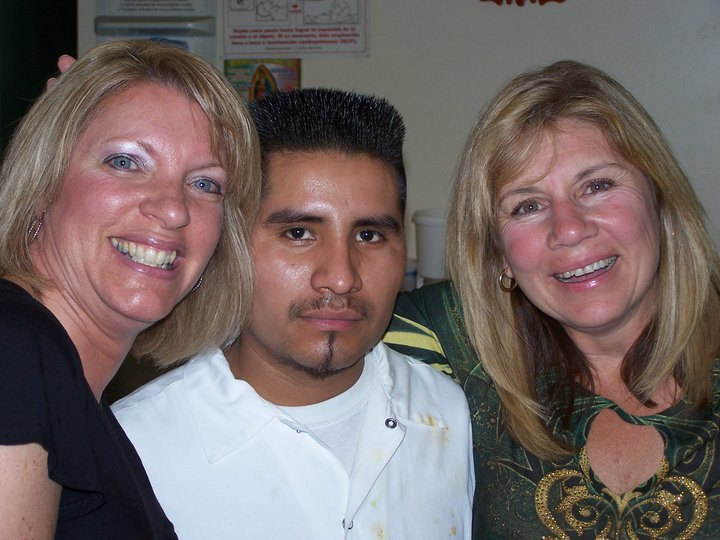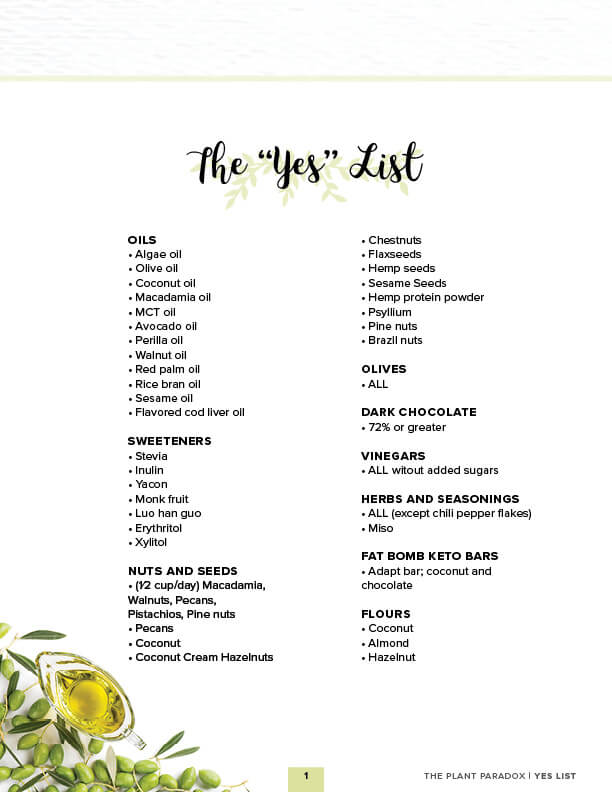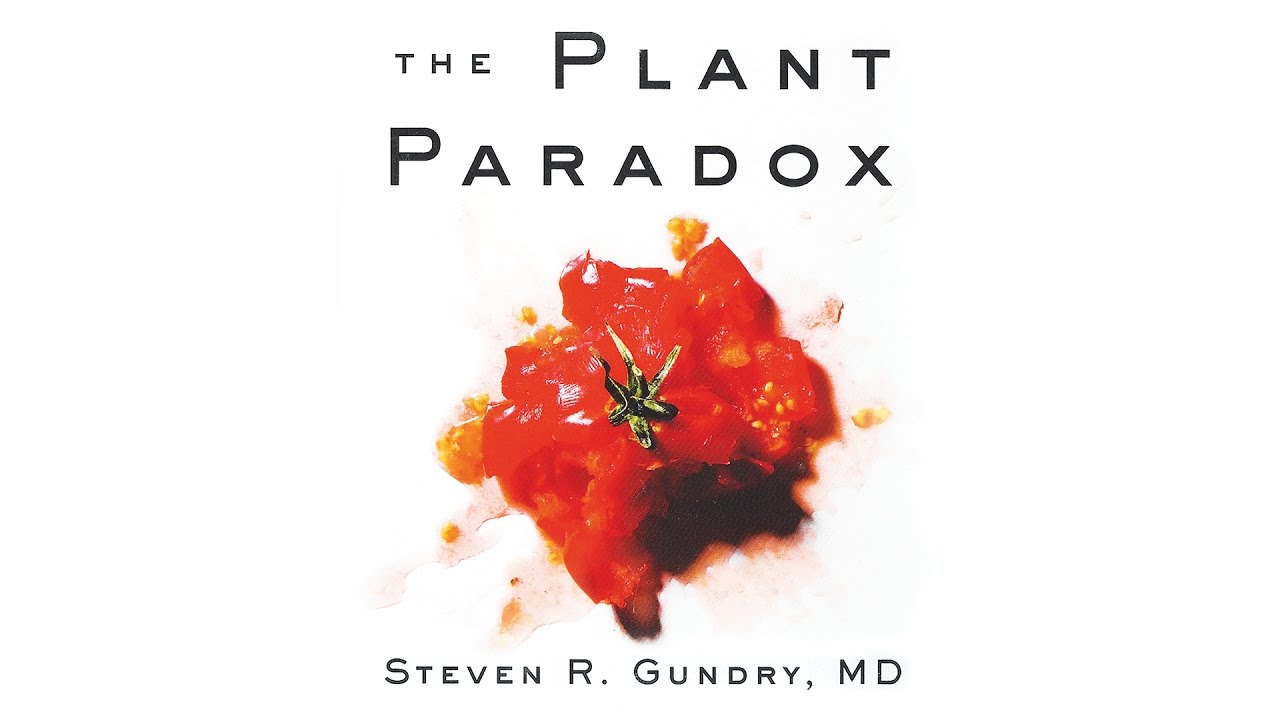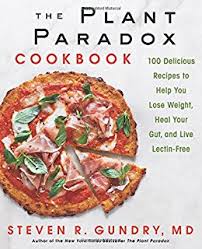weight loss
now browsing by tag
Now We have to Worry About Lectins…Oh Boy!

Let’s take a look at Dr. Steven Gundry’s book, The Plant Paradox, which is all of the sudden the IT book since Kelly Clarkson said she read it and lost 45 pounds. What ensued is a stampede to the book store by thousands in hope that they too will lose 45 pounds. After all, Kelly said she did this, lost weight, without exercise! Hello! Lose weight without exercising. Much different than the poor people who were forced into workout slavery by Jillian on The Biggest Loser! Boy, she got under my skin.
I, being a self-described health researcher, thought it my duty to check Dr. Gundry’s book out. What did I find? Dr. Gundry is against plants. What???? Okay, some plants. He claims that plants have their own defense mechanism that wards/kills maundering insects. The big plant evil ingredient is LECTIN!
What is lectin? A plant protein. Lectins in plants are a defense against microorganisms, pests, and insects. They may also have evolved as a way for seeds to remain intact as they passed through animals’ digestive systems, for later dispersal. This irritates your digestive system and causes an inflammatory response and leaky gut.
Dr. Steven Gundry sets out to demystify long-held myths about plant-based foods. These foods, believed for the most part, to be healthy, have been responsible for hurting the human body for so long.
Gundry exposes the real cause of weight problems, and if you’re one of those people who seem to be eating right and doing all the right exercises, yet suffering weight problems and related diseases, then you’ll want to read this book. Gundry’s book contends that your weight loss efforts are failing not because of any fault of yours, but because you’re mostly misinformed.
Dr. Gundry Bio
Steven R. Gundry is an American cardiac surgeon and held the Chief of Cardiothoracic Surgery title while he was a Professor at the Loma Linda University School of Medicine.
Here is a comment from a representative from the Hallelujah Vegetarian Diet.
First, I don’t buy the war between animals and plants or evolution. In Genesis 1:29 God originally gave us the plant kingdom for food. My understanding of creation is that mankind is the crown jewel of all God created, and He put us in place to be good stewards of His creation. So, thinking that plants were made to be food for us just makes sense. There is a symbiotic relationship between mankind and plants, even indicated by their generation of oxygen for us and our generation of carbon dioxide for them. They are good for us and we are good for them. I don’t see a war here.
Is it a coincidence that some of the most allergic food contains the most lectin?
Beans
Tomatoes
Peanuts
Potatoes
Soy Beans
Wheat
Dr. Gundry has products/supplements that he claims helps your system ward off the ill effects of lectin.
From the Amazon listing: At his waitlist-only clinics in California, Dr. Gundry has successfully treated tens of thousands of patients suffering from autoimmune disorders, diabetes, leaky gut syndrome, heart disease, and neurodegenerative diseases with a protocol that detoxes the cells, repairs the gut, and nourishes the body. Now, in The Plant Paradox, he shares this clinically proven program with readers around the world.
The simple (and daunting) fact is, lectins are everywhere. Thankfully, Dr. Gundry offers simple hacks we easily can employ to avoid them, including:
- Peel your veggies. Most of the lectins are contained in the skin and seeds of plants; simply peeling and de-seeding vegetables (like tomatoes and peppers) reduces their lectin content.
- Shop for fruit in season. Fruit contain fewer lectins when ripe, so eating apples, berries, and other lectin-containing fruits at the peak of ripeness helps minimize your lectin consumption.
- Swap your brown rice for white. Whole grains and seeds with hard outer coatings are designed by nature to cause digestive distress—and are full of lectins.
He has a 4.4 out of 5 star rating.
Looks like he has many fans. In my opinion, if it worked for Kelly Clarkson, it can work for you.
Here are some of the supplements he recommends.
Thanks for reading,
Terry Ryan, health blogger and pickleball enthusiast
Juicing For Weight Loss

|
The End of The 30 Day Juice Challenge

I have completed the 30 Day Juice Challenge and wanted to give you my personal review.
 It wasn’t hard and became routine so I give it a 10 on the easy scale. Let me add that I work from home so it is easy for me to prep and prepare juicing at my leisure. It would be much harder for a person who has a 9-5 job to prepare for juicing.
It wasn’t hard and became routine so I give it a 10 on the easy scale. Let me add that I work from home so it is easy for me to prep and prepare juicing at my leisure. It would be much harder for a person who has a 9-5 job to prepare for juicing.
As far as taste, it is something you will get used to. It only took me a couple of times to look forward to the juice. I also flavored it up with apples and ginger. After that even kale is pretty yummy. Who would of thought?
I didn’t find the cost prohibitive. I buy lots of produce every week anyway so this wasn’t a new area for me. Previously to my juicing challenge I tried to get as much organic as possible so I was already on the right track.
My disappointment was with the weight loss which was only a couple of pounds even though I was using once a day juicing as a meal replacement and gave up sugar and gluten. I did lose a few pounds but not the 20 I was hoping for. (sigh)
I felt fine but never got the “I feel like I have the energy of a 20 year-old.” Nope! It didn’t happen. I  would say my energy level only increase a tiny bit. That for me was my biggest disappointment.
would say my energy level only increase a tiny bit. That for me was my biggest disappointment.
The best benefit was my skin became flawless and glowed, so I at least looked better. I no longer craved sugar or processed carbs. My taste buds now desired a higher grade of eating.
So, what I learned:
I may have to juice 100% everyday to get the full benefits that Joe Cross brags about on Fat, Sick and Nearly Dead.
I am using the wrong juicer. I am using a cheap juice extractor and that doesn’t get the most juice out of the veggies and it heats the foods up destroying enzines and nutrients. See my post on Juicing vs. Blending.
Will I continue juicing? Yes, I will but not so dedicated. To complete my experiment, I am going to try juicing 100% for 7 days to see if I get WEIGHT LOSS and FANTASTIC ENERGY, but not right now. I need a break. I was doing Holy Juicing for Lent but I think I lost my followers who were doing it with me. Yes, it’s hard.
One thing I am sticking to is giving up white sugar and process foods. Yuck. And breads with
gluten. Bread just doesn’t agree with me anymore. Of course they are now putting all kinds of disgusting and dangerous chemicals in bread. All to keep it on the shelf longer and to make more money. No problem, there are tons of breads in the freezer section at the store that are gluten free and I have a great recipe for almond bread.
There you go. My review of the 30 Day Juicing Challenge.
The Psychology Of Losing Weight

An Alternative To Willpower For Losing Weight
Blogger: Terry Ryan (admin@slimhealthysexy.com)
A common belief, even among doctors, is that almost no one succeeds in losing weight in the long term. And for almost two decades, I’ve counted myself among the skeptics, being able to tally on the fingers of one hand the number of my patients who’ve managed to do it—literally less than five out of multiple hundreds, if not a few thousand.When I stumbled across the ideas put forth in the slow-carb diet though (“slow” in contrast to “low” because one cheat day a week is allowed), I became excited—and not just for my patients. Though I’ve never had much of a weight problem myself, after nine years of marriage, four years of fatherhood, and a consequent 50% reduction in the time I have available for exercise, I found I’d put on nearly twenty extra pounds. So when my wife noticed me noticing several inches of my abdomen hanging over the sides of my belt one day, she suggested I try the slow-carb diet myself. I did and shed the extra weight in just two months.
Because I found the diet both easy and effective, and because a number of studies have suggested that an excess of carbohydrate is likely a major contributor to the epidemic of obesity in North America, I began recommending the slow-carb diet to a number of my patients. And they started losing weight.
But not all of them. Some just couldn’t wrap their minds around the idea of giving up carbohydrates (including a cardiologist!) and didn’t even want to try it. Some tried it, but didn’t like it. And some liked it, but couldn’t stay on it.
This last group was the one that frustrated me the most. Here was an approach to weight loss that didn’t require calorie counting, knowledge of food groups, or portion control. They only needed to follow one simple rule to make it work: don’t eat carbohydrates six out of every seven days. Not to mention that almost all of them told me they didn’t actually miss the carbohydrates! So why did they fail?
“Weak willpower,” they said.
When I heard that, though, I became excited all over again, because the reason they gave me for their failure was wrong. A lack of willpower wasn’t what did them in. What did them in was their decision to use willpower in the first place.
THE PROBLEM WITH WILLPOWER
Willpower is not only among the weakest of mental forces, but in most people it actually fatigues with continued use. Some have suggested this is part of the reason the cheat day helps people stay on the diet: it gives their weary wills a much-needed chance to recover enough to resist the subsequent week’s temptations. The problem, though, is that the time horizon over which willpower fails isn’t days—it’s hours (not that the cheat day isn’t crucial—just not, in my view, for recharging the will).
This almost certainly explains why most of my patients who gave up the diet told me that when they would come across a tempting carb during the week, too often their wills weren’t strong enough to resist it. When they found themselves confronted with a piece of pie, a brownie, or a bagel—especially if it was near the end of the day—they’d end up eating it almost as often as they’d pass it by. It didn’t take too many weeks of failing this way for them to become discouraged and give up.
But the reason they failed wasn’t because the slow-carb diet doesn’t work. The reason they failed was because they were relying the wrong strategy to implement it. The key to resisting the temptation isn’t willpower. It’sdistraction, avoidance, and acceptance. What follows below, then, is the 7-point plan I gave them for beating temptation without relying on willpower.
THE 7-POINT PLAN
1. Distraction is more effective than willpower. In 1970 psychologist Walter Mischel famously placed a cookie in front of a group of children and gave them a choice: they could eat the cookie immediately, or they could wait until he returned from a brief errand and then be rewarded with a second. If they didn’t wait, however, they’d be allowed to eat only the first one. Not surprisingly, once he left the room, many children ate the cookie almost immediately. A few, though, resisted eating the first cookie long enough to receive the second. Mischel termed these children high-delay children.
How did they succeed? “Instead of focusing prolonged attention on the object for which they were waiting,” Mischel writes, “they avoided looking at it. Some covered their eyes with their hands, rested their heads on their arms, and found other similar techniques for averting their eyes from the reward objects.” In other words, Mischel concluded, distraction is superior to willpower for delaying gratification.
To resist a tempting pleasure, then, you have to find a way not to resist it but to distract yourself from it. How? With the most distracting thing there is: another pleasure.
2. The most effective way to distract yourself from one pleasure is with another pleasure. In a second study, Mischel placed two marshmallows side by side in front of a different group of children to whom he explained, as in the previous study, that eating the first before he returned to the room would mean they couldn’t eat the second. He then instructed one group of them to imagine when he stepped out of the room how much marshmallows are like clouds: round, white, and puffy. (He instructed a control group, in contrast, to imagine how sweet and chewy and soft they were.) A third group he instructed to visualize the crunchiness and saltiness of pretzels. Perhaps not surprisingly, the children who visualized the qualities of the marshmallows that were unrelated to eating them (that is, the way in which they were similar to clouds) waited almost three times longer than children who were instructed to visualize how delicious the marshmallows would taste.
Most intriguing, however, was that picturing the pleasure of eating pretzels produced the longest delay in gratification of all. Apparently, imagining the pleasure they’d feel from indulging in an unavailable temptation distracted the children even more than cognitively restructuring the way they thought about the temptation before them.
So when you want to avoid something tempting, read an engrossing book instead. Or watch a movie. Or listen to music. Something you find genuinely pleasurable. Or if for some reason you can’t engage in an alternative pleasure—or shouldn’t for some reason—think about doing it instead. For example, when you see a pizza, think about eating ice cream. As vividly as possible, imagine the specific sensations your tongue will experience as your favorite flavor of ice cream drips languorously down your throat and into your stomach. (On the other hand, thinking about one food when you’re trying to avoid eating another food may be too viscerally activating. Some people may need to turn their thoughts to a different kind of pleasure than the one they’re trying to avoid to make this strategy work for them.)
Or, alternatively, turn your focus to a problem you’re trying to solve. Whether a math problem, a brain teaser, a relationship issue, or a philosophical question, problem-solving is intrinsically engaging, and engagement is the key to distraction.
But not just any kind of engagement, it turns out. Emotionally arousing engagement. Turning to something you find merely intellectually interesting is often not enough, especially when you’re viscerally activated by hunger (or sexual attraction, or nicotine cravings, or whatever). You need to find something to distract you that makes you feel good. It could be thinking about an upcoming date or vacation, or an expected pay raise and all the things you’re going to buy with it, or that really awesome movie you’re going to be seeing later that day. But whatever it is…
3. Plan out your distraction ahead of time. Studies show that making decisions–even simple ones–also depletes willpower. If you’re constantly deciding what alternative pleasures to think about or pursue each time you face a temptation, you become progressively less likely to be able to make the strategy of distraction work. Which is when rationalizations gain the power to convince you it’s okay to do what you’re trying so hard not to. The key is having your response ready. To make using it a rule instead of an on-the-spot decision. Something that doesn’t require conscious thought. That way, when you’re abruptly confronted with a display of cookies at the office Christmas party, you don’t have to fumble for an effective distraction. You already have it ready to pull up automatically, without even thinking about it.
4. Use willpower to create habits. In point of fact, I urge everyone on the slow-carb diet to leverage the power of habit when making all their food choices. That is, figure out what you’re going to have for your regular meals every day before you enter the cafeteria or the restaurant or wherever you eat your meals on a regular basis, and simply make eating it an automatic rule. That way, you don’t even have to call on the power of distraction to make sure you stay on the diet (much less the strategy of willpower). This is why, for example, I have scrambled eggs for breakfast and a chicken Caesar salad for lunch every weekday.
Research shows we’re most likely to succeed in maintaining any behavior (whether flipping off a light switch when we leave a room, avoiding carbs at lunch, or exercising after work) when we make it a habit. Not that getting ourselves to engage in a behavior consistently enough to turn itinto a habit is easy. For one thing, the time required to establish a new habit varies tremendously, in one study taking anywhere from 18 to 254 days. For another, and not surprisingly, the more complex the desired behavior, the longer turning it into a habit seems to take, decreasing the likelihood that we can turn it into a habit at all. Finally, when confronted with the need to choose between competing behaviors, we tend to follow the path of least resistance, the path that requires the least amount of energy, which isn’t necessarily the path along which our desired behavior lies.
Here, however, is where the creative use of willpower can help us: not to resist temptation directly, but to lower the energy required to initiate a desired behavior (for example, exercising) while raising the energy required to initiate competing, undesired behaviors (for example, watching television). In this way, we decrease the effort required for us to act in the way we want and increase the effort required for us to act in a way we’d rather not. We might, for instance, choose to move our treadmill up from the basement into the living room where we spend more of our time while simultaneously removing the batteries from the television remote control and placing them in an inconvenient location. By placing the desired behavior along the path of least resistance, we turn it into the behavior we’re most likely to repeat. And the more we repeat it, the more likely it is to become a habit, and the less and less we need it to lie along the path of least resistance. The key lies in recognizing that the energy required to initiate a desired behavior often needs to be even lower than we expect. Which is why the reason moving a treadmill from the basement to the living room may mean the difference between using it and not. Despite our believing it shouldn’t, having to walk that small extra distance to the basement often requires a level of energy that’s beyond us, especially when other habits, like television, beckon within easier reach.
5. Avoid habituation to distraction by inventing new distractions.Though turning to an emotionally engaging distraction is a powerful way to avoid succumbing to temptation, the more often we turn to it, the less effective it becomes. We get used to—or habituate, as the psychologists like to say—to everything. Think about it: when is the enjoyment you get from your material possessions (a smartphone, a sports car, a boat) at its greatest? When you first buy it. Just like the flavor of gum is most intense when you first start chewing it but then quickly fades, the enjoyment you get from your possessions diminishes the longer you have them and the more you experience them. Unfortunately, our possessions aren’t the only thing to which we habituate. We also habituate to our thoughts. That is, the more you think about something, the less your thinking about it arouses emotion (this isn’t all bad: habituation is also what helps people overcome phobias). But what this means is that the more you turn to your preplanned distractions, the less they’ll actually distract you.
The solution? You have to continually find and plan alternative distractions. Once you find your go-to distraction no longer works, don’t keep turning to it. Recognize it as a signal that you need to find a new one. That way, you’ll always have an effective means for dealing with unexpected temptations when they appear.
6. Avoidance is even more effective than distraction. Recognize, however, that distraction is most effectively used as a bridge—a bridge to the most effective strategy of all: avoidance.
In another part of his first study, Mischel also tempted children with a cookie, but this time took it away from half of them when he left the room (telling the children from whom he took it that they could signal their desire to eat it immediately by ringing a bell). What he found was that the effect of removing the temptation was even more striking than visualizing an unavailable pleasure: six out of eight children who couldn’t view the cookie waited a full fifteen minutes before signaling their desire to eat it; those who could view it, on the other hand, waited on average less than a minute.
The lesson? If you want to stop eating carbs, stop buying them. Avoid the shelves in grocery stores that stock the ones that tempt you. Avoid restaurants that sell your favorite desserts or offer mostly carbs (Italian restaurants, especially—unless it’s Saturday!). The best way to avoid eating carbs, in other words, is to minimize the likelihood that they’ll cross your path in the first place.
This may sound obvious, but how many of us actually plan our days—actually alter our schedules—based on this principle? If you’re serious about meeting your weight-loss goals but find your ability to resist carbs is poor, you can’t just have a plan in place for distracting yourself when you meet with temptation. You have to design your days to minimize the likelihood of encountering temptation at all.
This redesign needn’t be dramatic. Sometimes you only need to walk down an alternative hallway at work—the one that bypasses the candy machines, for example—to make effective use of the principle of avoidance, even if it means going a little out of your way. Or maybe take a different route home (the one that bypasses McDonald’s). Or make sure to shop when you’re not hungry so you don’t bring home carb-containing foods to tempt you when you are hungry. Often, the sum of a series of small interventions that have been carefully planned adds up to a result that’s greater than the sum of its parts. When it comes to losing weight, small, carefully designed and consistently executed interventions are in general far more effective than one or two large ones that require tremendous amounts of willpower.
7. Acceptance of pain will reduce its influence on your behavior.We’ve been built by evolution to avoid pain, signaling as it does danger, injury, and even the possibility of death. But studies suggest we sometimes put ourselves at risk for even greater suffering when we try to avoid pain than when we allow ourselves to feel it. More harm often results from excessive drinking and drug use, for example, than from the anxiety they’re often used to anesthetize. And the willful suppression of hunger (which is, essentially, pain) is associated with an increase in food cravings and binge eating.
In contrast, accepting pain, being willing to experience it without attempting to control it, has actually been found paradoxically to decrease pain. In one study of patients with anxiety, for example, subjects who were taught to accept their anxiety reported substantial reductions in worry, reductions that persisted even beyond the duration of the study.
But such a decrease is only a happy byproduct, for the true purpose of acceptance isn’t to diminish pain but rather to become more comfortable feeling it. In fact, aiming to diminish pain purposely via acceptance is functionally no different than trying to suppress it, and as a result typically backfires. For acceptance isn’t about feeling better so much as it is about doing better, about preventing anxiety from causing us to socially isolate ourselves—or preventing hunger from causing us to overeat. And indeed, at least one study showed that accepting food cravings—rather than resisting them—reduces eating.
So when you’re hungry and all there is to eat is carbohydrate, in addition to turning to a distraction and trying to remove yourself, or the carbs, from the area, consciously recognize and accept the fact that you’re feeling hungry—and move on. For accepting hunger rather than resisting it is what will make it far more likely that you’ll be able to uncouple your hunger from the action to which it usually leads—eating.
FINAL THOUGHTS
Of the twenty or so patients of mine who abandoned the slow carb diet, fourteen agreed to try it again once I introduced them to my 7-point plan. I was careful to warn them—as I would warn you—that as straightforward as these steps seem in principle, they take consistent practice to implement effectively. But if you do practice them consistently, you’ll have the same chance at success as my patients—all of whom, as of this writing, are still on the slow-carb diet and have lost in aggregate approximately 750 pounds. So no longer do I count myself among physicians who believe that only the smallest subset of people can achieve and maintain weight loss in the long-term. Now I know that when it comes to the slow-carb diet—to dieting in general—judicious use of the principles of distraction, avoidance, and acceptance will dramatically increase your chances of success.
###
All the ideas in this post are drawn from my book, The Undefeated Mind: On the Science of Constructing an Indestructible Self, every page of which contains innovative strategies—all based on rigorous scientific studies—to increase your ability to handle adversity and resist discouragement. Check it out. Resilience really can be learned.
Hey, First Day in The hardest!

 Don’t worry, be happy. The first day is the hardest. Your brain will be screaming, “Where’s the sugar!” Just ignore the brain. Sugar is an addiction and with all addictions, this shall pass.
Don’t worry, be happy. The first day is the hardest. Your brain will be screaming, “Where’s the sugar!” Just ignore the brain. Sugar is an addiction and with all addictions, this shall pass.
Gluten is another really nasty chemical and tough one to give up plus it is in everything. Have no fear…there are breads with no gluten. They are usually located in the freezer section in the grocery store.
Here is a recipe for gluten free bread that is easy to make:
Low Carb Almond Bread Recipe – Jorge Cruise
Almond Bread Recipe
3.5 cups Almond flour
1/4 cup melted butter
3 eggs
1 tsp. baking soda
1/4 tsp. salt
1 cup yogurt
Mix well. Spray pan with baking spray.
Put into loaf pan, bake at 350 degrees for 45 minutes. Cool and enjoy.
As far as alcohol….ugh! What good ole alcohol does to your body. Terrible things.
Alcohol is a poison 
Your body can only process one unit of alcohol an hour. Drink a lot in a short space of time and the amount of alcohol in the blood can stop the body from working properly.
It can:
- slow down your brain functions so you lose your sense of balance.
- irritate the stomach which causes vomiting and it stops your gag reflex from working properly – you can choke on, or inhale, your own vomit into your lungs.
- affect the nerves that control your breathing and heartbeat, it can stop both.
- dehydrate you, which can cause permanent brain damage.
- lower the body’s temperature, which can lead to hypothermia.
- lower your blood sugar levels, so you could suffer seizures.
Look out for the signs
It can be a very fine line. One minute your house guest is stupidly drunk, the next they’ve become dangerously intoxicated.
Being aware of the signs of alcohol poisoning is crucial, because if a person you care about is suffering from acute alcohol poisoning, they will be in no state to help themselves.
Look out for:
- Confusion
- Loss of coordination
- Vomiting
- Seizures
- Irregular or slow breathing (less than eight breaths a minute)
- Blue-tinged or pale skin
- Low body temperature (hypothermia)
- Stupor – when someone’s conscious but unresponsive
- Unconsciousness – passing out
Good luck on your first day. Feel free to write to me if you have questions. admin@slimhealthysexy.com
The greatest barrier to success is the fear of failure.











 D5 Creation
D5 Creation